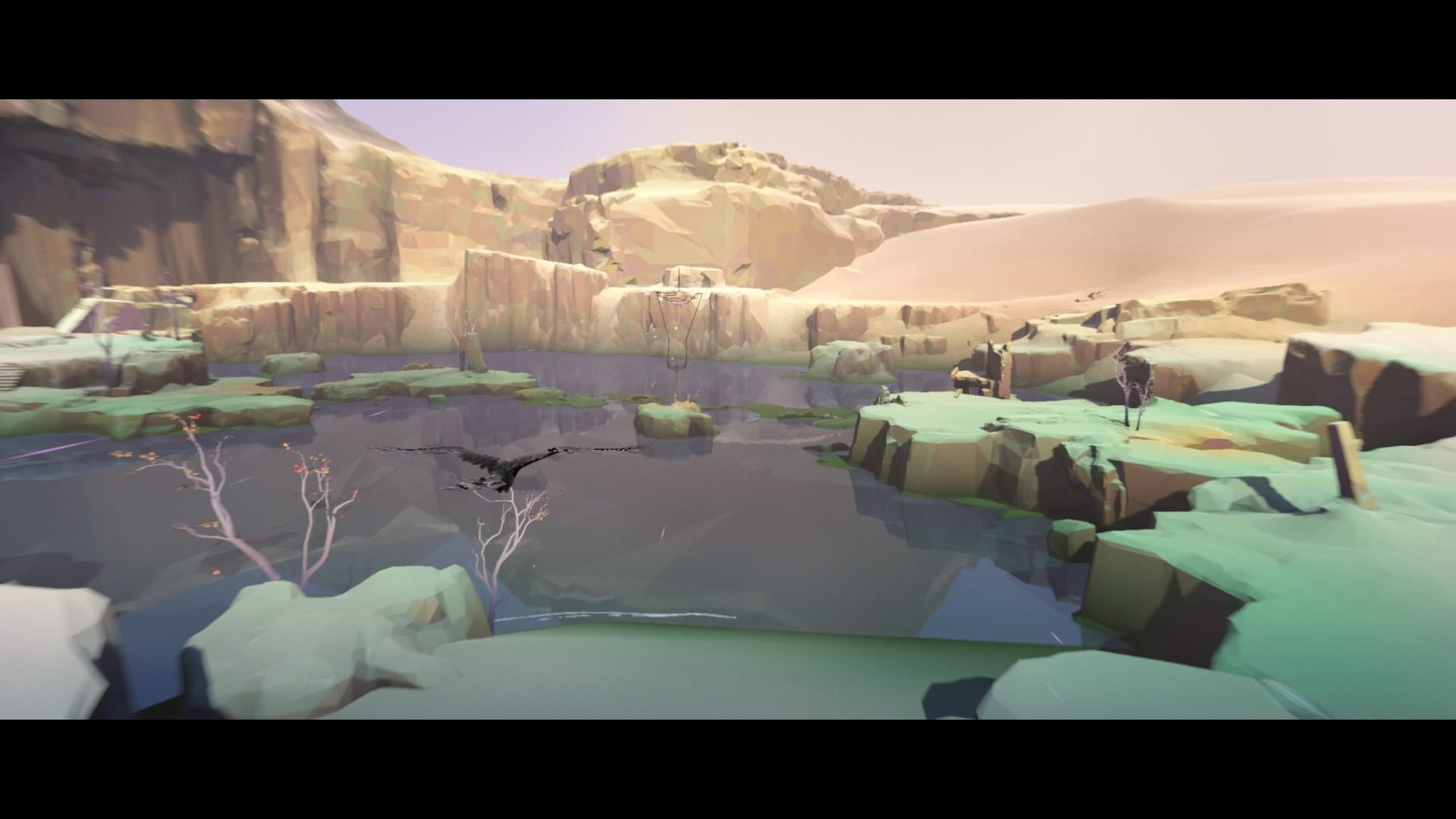Vane is an immersive, art driven third person puzzle/platformer and is the second game released by Tokyo based indie developer Friend & Foe Games. First debuted at PSX in 2016, and even featured on Sony’s main stage at PSX 2017, Vane is the ambitious result of three years of painstaking work by just five artists and programmers. The developers have sought to create the ultimate connection between player and world. Immersion breaking elements such as a heads up display, conspicuous hints or unnatural queues in the right direction have been altogether removed in an attempt to bridge the gap between those controlling the game and their discoveries. Progress and puzzle completion are meant to feel truly rewarding. The team at Friend & Foe have succeeded in their goal, but at a serious detriment to any enjoyment you may have had with Vane.
Story
This being an indie game, the story is less overt and more up for interpretation. There are no personalities for us to fall in love with or develop a loathing for. There is no narrative to follow or plot twists to surprise us. Vane is more of a tonal experience. There are countering themes of loneliness and togetherness strewn throughout. The opening section of the game has you controlling a solitary bird flying throughout an extremely lonely and arid plot of desert land. The goal is to find weather vanes surrounded by small flocks of birds. By finding all of the small flocks and directing them to the central large vane, all of the birds can work as one to reach their goal.
While in human form later on in the game, you are required to work together with small groups of children to roll a large magical orb throughout a level. When the orb requires more power to use, the player must seek out other lost groups of children and bring them together to progress. In another area while playing as a boy you need to free trapped birds. Once enough are sprung from their cages, they can work together to move things along. Transformation is another theme that evolves beyond the obvious use of moving between your child and bird form and even bleeds in to literal “world building.”
The “story” elements of Vane are neither prevalent or disruptive. They’re just there in the background, and give us as players the freedom to construe and decipher their meaning.

Visuals
Much of the developer’s effort has clearly gone towards building the visual character of the game. It is truly unique and the highlight of Vane. The style is difficult to describe – it lies somewhere between polygonal art and cell shading. I loved the way the world pulsated with thundering bass around you when you experience your first transformation from bird to boy. There are moments towards the latter half of the game when the environment transforms all around the player, and everything from walls to bridges to staircases come to life as they grow and evolve all around you. It reminded me a lot of Tearaway – the way the environments were pieced together like pieces of paper in an origami.
Unfortunately, the game suffers from quite a number of technical issues that break the immersion that the visuals create. Severe frame rate issues, texture pop-in, and screen tearing were prevalent from start to finish. This often had me questioning whether I was witnessing the unique visual styles, or unmistakable jank.

Gameplay
The mechanical piece of Vane is the ability to transform from a bird to a small boy. This ability is granted early on by a mysterious golden substance. You can morph from boy to bird by simply jumping from a ledge, but transforming back into a boy requires tracking down a supply of gold. This seldom used mechanic is quickly forgotten, but does make for some interesting puzzle solving and traversal in a few sections of the game.
Regrettably Vane does not make a good first impression. The first scene in the game has you clumsily flying your bird through a derelict and lonely dessert. Your objective is unclear (as was the developers intention) but trying to figure out exactly what to do quickly became boring and frustrating. I spent way too much time in the early game wandering around a map that felt massive as I sought out five poorly marked weather vanes. It was not fun. Controlling the bird didn’t make anything better as doing anything other than flying in a straight line is an absolute chore.
Those tenacious enough to push through this initial slog will be rewarded with the second and only remotely enjoyable part of Vane. But things drop off again after this section. As annoying as controlling the bird is, I was confused as to why the game all but ditches the use of this mechanic in the second half of the game. The process of all but aimless wandering unfortunately repeats itself later on.
Furthermore, the last two sections of the game seem to dump puzzle solving or discernible platforming altogether. It just kind of turns into a confusing and random walking simulator that gets swept up in showing off its own visual style. All of this results in a game that is equal parts boring, frustrating, and confusing.

Recommendation
Those who remember seeing Vane debut in 2016, or demo in 2017, were right to be intrigued. This is a game that promised a truly unique visual style and unmatched level of immersion. In a way, Vane delivers on both of those promises. But in the pursuit of crafting an indistinguishable game world and granting advanced levels of autonomy, the developers forgot to make Vane any fun to play. Even putting the technical issues aside, this is one we cannot recommend.

*Vane was provided to the reviewer by the publishing company but this fact did not alter the reviewer’s opinion*
Check out our Review Guide to see what we criteria we use to score games.

